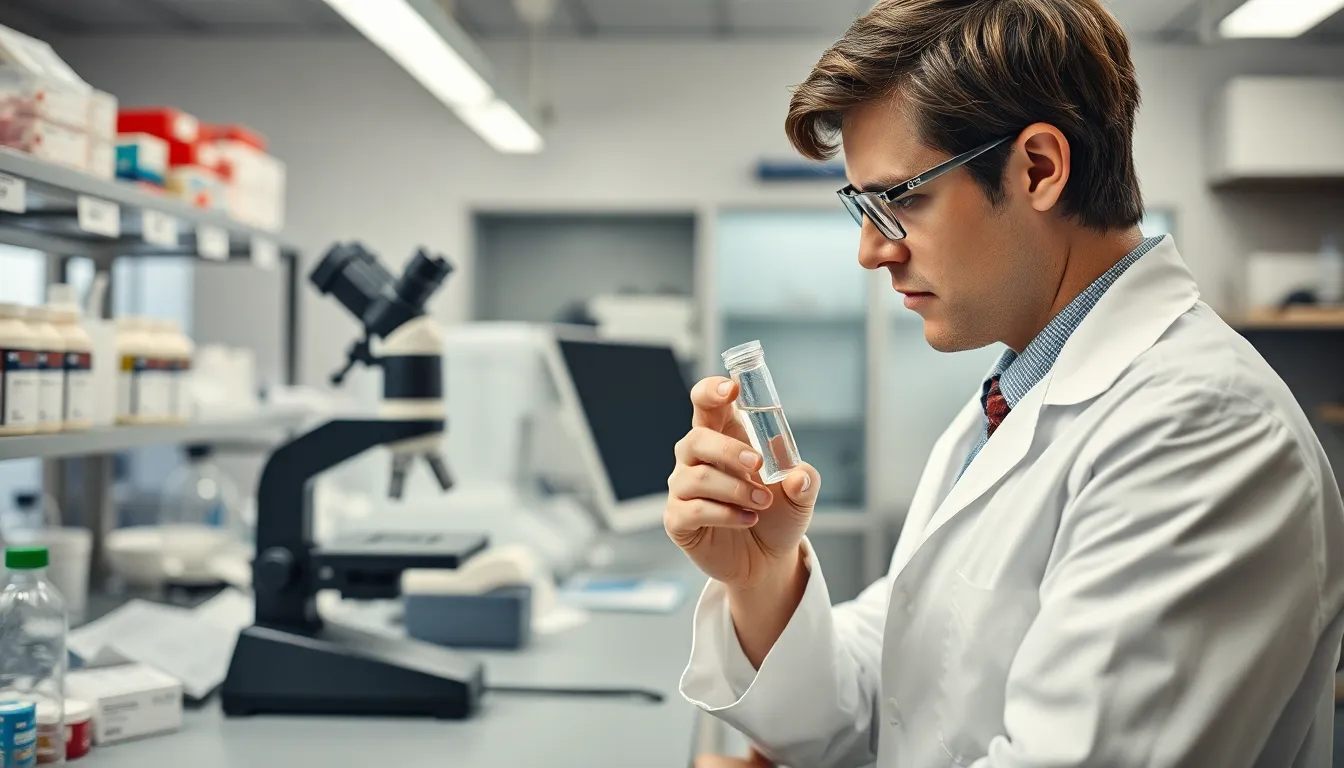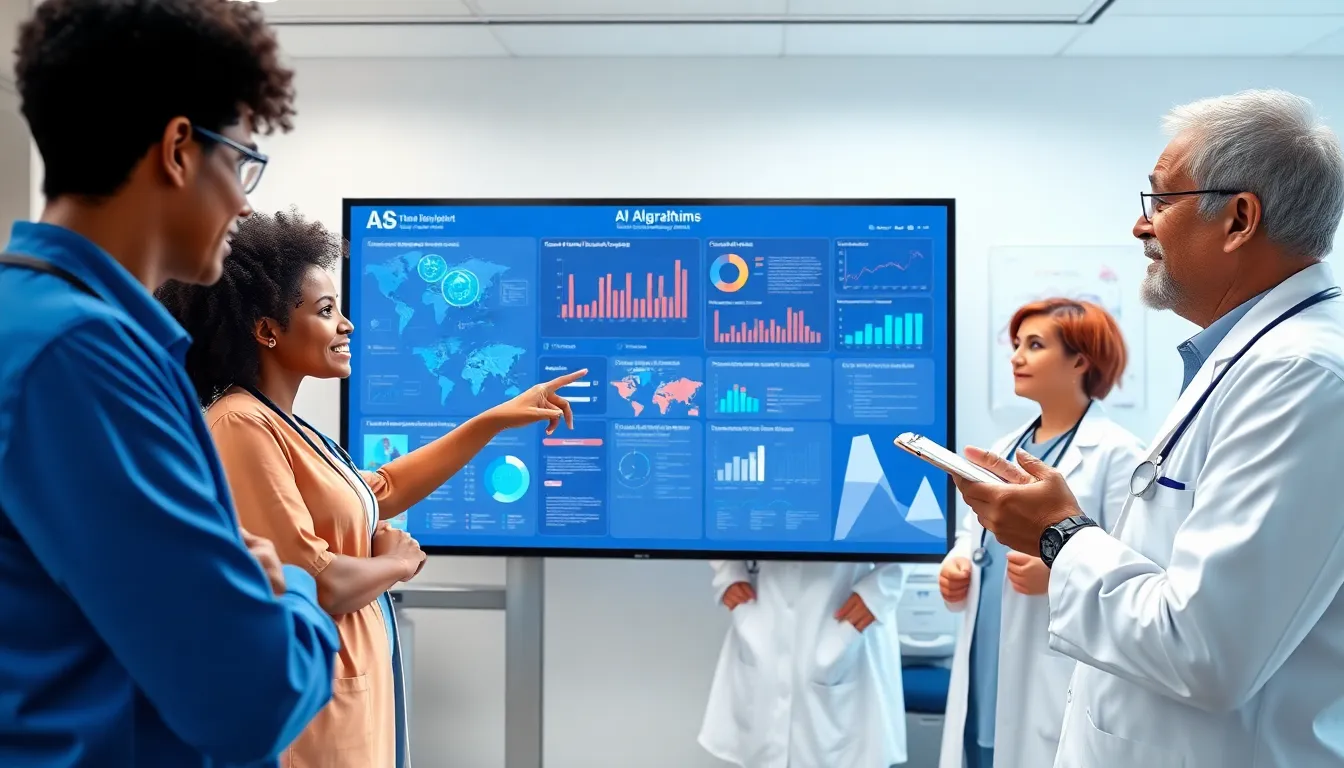In a world where your toaster can send you a text, it’s no surprise that healthcare is getting a digital makeover too. Enter the Medical Internet of Things (IoT), where smart devices are not just for tracking your steps but also for monitoring your health. Imagine your smartwatch nudging you to breathe while your fridge reminds you to eat those veggies—talk about a health coach that never takes a day off!
Table of Contents
ToggleOverview of Medical Internet of Things
The Medical Internet of Things (IoT) encompasses interconnected devices that enhance healthcare delivery and patient monitoring. Medical devices, like wearables and remote sensors, gather real-time health data. Hospitals utilize these technologies to track patients’ vital signs accurately.
Smart devices, such as fitness trackers and smart medication dispensers, provide critical information on user health. They assist in medication adherence by sending reminders when it’s time to take prescriptions. This proactive approach minimizes hospitalization rates by ensuring users receive timely alerts.
Wearable technology, including smartwatches, actively engages patients in their health management. Features like heart rate monitoring and sleep tracking promote user awareness and can encourage lifestyle changes. When patients see data trends on their devices, they become more invested in their wellbeing.
Connected medical appliances integrate seamlessly into patients’ homes. For example, a smart glucose monitor can transmit readings directly to healthcare providers. This connection facilitates quick adjustments to treatment plans and enhances patient-provider communication.
Healthcare professionals benefit from data analytics powered by Medical IoT. By analyzing collected data, they can identify patterns and make informed decisions. Predictive analytics enhance preventive care, allowing for timely interventions in chronic disease management.
Security and privacy concerns remain vital in the Medical IoT landscape. Ensuring data protection requires robust encryption and secure data transmission protocols. Compliance with health regulations, such as HIPAA, further safeguards patient information and promotes trust in these technologies.
The Medical Internet of Things represents a transformative shift in healthcare technology. As more devices connect, the potential for improved health outcomes increases significantly. Continuous advancements in this field promise to redefine how healthcare is accessed and delivered, making patient-centered care more effective and personalized.
Key Technologies in Medical Internet of Things

The Medical Internet of Things leverages various technologies to elevate healthcare delivery. Key innovations contribute to enhanced patient engagement and data accuracy.
Wearable Devices
Wearable devices encompass smartwatches, fitness trackers, and health monitors. These devices actively collect health metrics like heart rates, step counts, and sleep patterns. They encourage individuals to maintain healthier lifestyles by providing real-time feedback. Users receive alerts for irregularities, prompting timely medical consultations. Integration with mobile applications enables seamless data sharing with healthcare professionals. Patients benefit from wearing these devices, enhancing health management. Continuous advancements in wearable technology promise increased functionality and improved user experiences.
Remote Monitoring Systems
Remote monitoring systems facilitate the continuous tracking of patient health outside traditional clinical settings. These systems utilize sensors that transmit vital signs, such as blood pressure and glucose levels, directly to healthcare providers. Instantaneous data sharing allows for quick interventions, making it crucial for chronic disease management. Healthcare teams can analyze patterns and adjust treatment plans based on real-time information. Patients maintain a sense of security knowing professionals monitor their health proactively. This technology enhances communication between patients and providers, fostering a collaborative approach to care.
Benefits of Medical Internet of Things
The Medical Internet of Things (IoT) offers numerous advantages that enhance healthcare delivery and patient engagement. These benefits include improved patient care and enhanced data collection.
Improved Patient Care
Improved patient care arises from real-time monitoring capabilities of connected devices. Wearables provide continuous health metrics, allowing physicians to track conditions and adjust treatments promptly. Smart devices alert users to potential health issues, prompting timely consultations. Remote monitoring reduces the need for hospital visits, making healthcare more accessible. Engaging patients through personalized health insights fosters adherence to care plans. Medical IoT technology creates a proactive healthcare approach that aligns with each patient’s unique needs.
Enhanced Data Collection
Enhanced data collection transforms the way healthcare providers gather and analyze patient information. Connected devices capture vast amounts of data in real time, providing valuable insights into patient health. This data allows for predictive analytics that identify trends and potential health risks. Healthcare professionals access comprehensive health records seamlessly, facilitating informed decision-making. Patient engagement rises as individuals monitor their health data, leading to improved health outcomes. By leveraging the Medical IoT, healthcare systems achieve a holistic view of patient care, allowing for continuous improvement in treatment plans and strategies.
Challenges and Concerns
Several challenges and concerns accompany the rise of the Medical Internet of Things. These issues require careful consideration as technology continues to evolve within healthcare.
Data Security and Privacy
Data security and privacy represent significant challenges in the Medical IoT landscape. Smart devices collect and transmit sensitive health information, making them vulnerable to cyberattacks. Without robust encryption, unauthorized access can lead to data breaches, exposing patient details. Compliance with regulations, such as HIPAA, ensures that patient information receives necessary protection. Healthcare providers must implement strong security measures to safeguard data integrity and prevent identity theft. Regular updates and security audits help mitigate risks, fostering trust between patients and providers.
Interoperability Issues
Interoperability issues often arise as various devices and systems don’t seamlessly communicate. Different manufacturers may use incompatible data formats, which complicates effective data sharing among healthcare providers. The lack of standardization can hinder the potential benefits of the Medical IoT. Streamlined communication between devices is crucial for delivering coordinated care and avoiding misdiagnoses. Investments in developing universal protocols and integrating platforms can ultimately enhance interoperability, improving overall patient outcomes. Collaboration among stakeholders also plays a vital role in addressing these challenges.
Future Trends in Medical Internet of Things
Emerging advancements in the Medical Internet of Things showcase a strong increase in artificial intelligence integration. AI algorithms analyze patient data, providing personalized health insights and predictive modeling. This technology can alert healthcare providers to potential health risks before they escalate.
Telemedicine adoption continues to rise due to the convenience it offers. Remote consultations now occur frequently as patients can connect with healthcare professionals from their homes. This trend enhances access to care, especially for patients in rural areas.
Smart devices play a pivotal role in medication adherence. Innovations in smart pill bottles track dosages and send reminders directly to users’ smartphones. This ensures patients stay on schedule with their treatments, reducing the risk of complications.
Data interoperability is gaining attention from stakeholders in the healthcare industry. Improved standardization of data formats facilitates seamless communication between various devices and systems. By overcoming interoperability challenges, the Medical IoT maximizes its benefits for patients.
Wearable technology continues to evolve with enhanced functionality. New devices now offer advanced features like blood pressure monitoring and ECG capabilities. These capabilities enable users to take a proactive role in their health management and foster better communication with healthcare providers.
Security measures are becoming increasingly sophisticated to address cyber threats. Hospitals and device manufacturers prioritize encryption methods to safeguard sensitive data. Compliance with strict regulations ensures that patient information remains protected throughout its lifecycle.
Expect a stronger focus on patient-centered designs in upcoming Medical IoT devices. Creating user-friendly interfaces helps engage patients more effectively. By putting the patient experience first, healthcare providers can encourage consistent interaction with technology.
The Medical Internet of Things is reshaping healthcare by enhancing patient engagement and improving care delivery. With the rise of smart devices and real-time monitoring, patients gain greater control over their health. This technology not only fosters timely interventions but also promotes healthier lifestyles through constant feedback and reminders.
As the landscape evolves, the integration of AI and telemedicine will further enhance accessibility and personalization in healthcare. While challenges like data security and interoperability remain, ongoing advancements promise to address these issues. The future of the Medical IoT looks bright, paving the way for a more connected and effective healthcare system.





